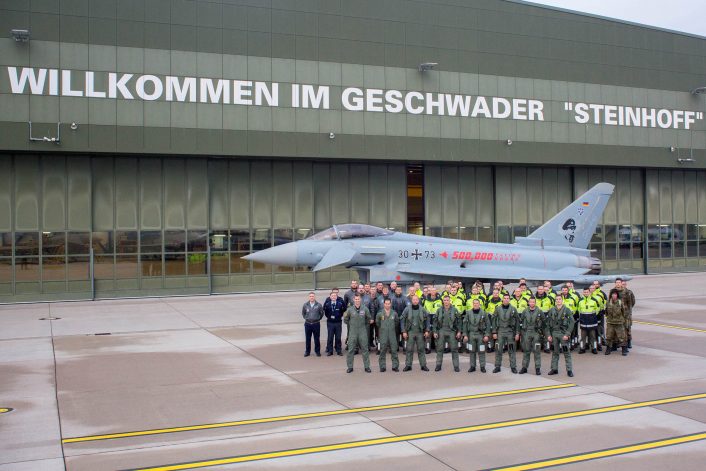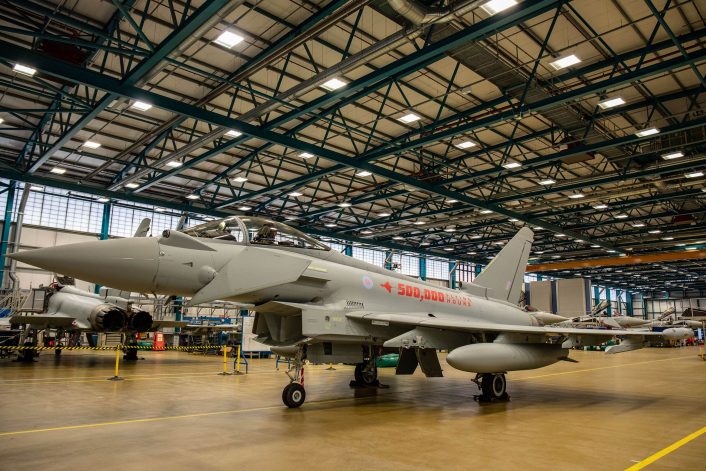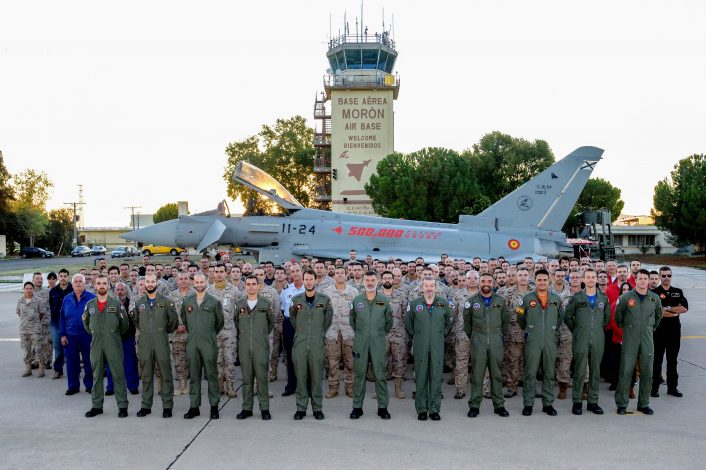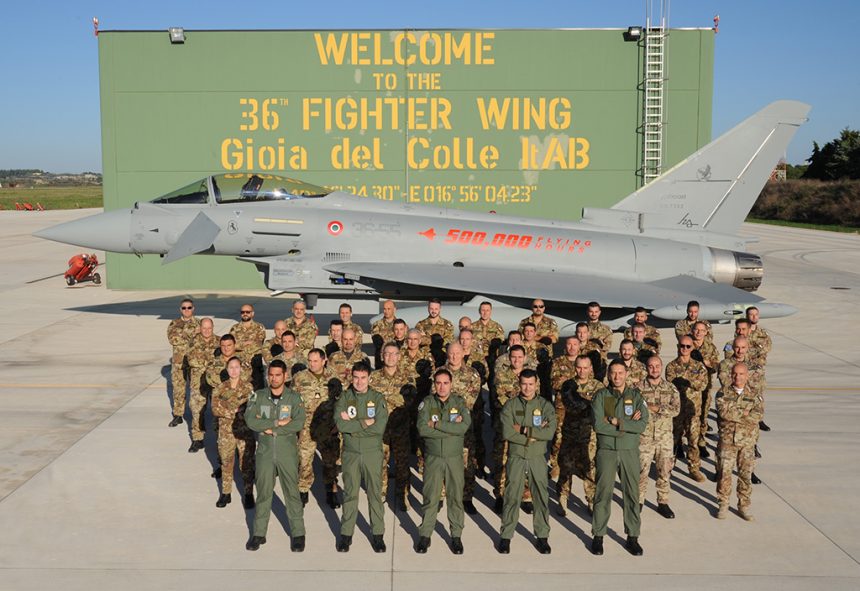The Eurofighter fleet has passed the 500,000 flying hours mark, an achievement celebrated by applying special markings to four jets of the four partner nations.
The fleet of Eurofighter Typhoon aircraft has passed the 500K flying hours milestone, Eurofighter Jagdflugzeug GmbH confirmed today.
“Passing the 500,000 flying hours milestone underscores the fact that today Eurofighter Typhoon is the backbone of NATO’s European air defence” Volker Paltzo, CEO of Eurofighter Jagdflugzeug GmbH, said.
“But, looking to future horizons, it will continue to be developed to defend against all threats for decades to come. The aircraft will play a key role in the future battlespace, and will be a central pillar in any future European combat air system, developing and integrating key technologies that will feed in to that future system.”
The achievement was celebrated by the air forces of the four partner nations that each applied special 500,000 FH markings to one aircraft. The Italian Air Force Typhoon with the special markings (top image) is the F-2000A MM7352/36-55 belonging to the 36th Stormo (Wing) at Gioia del Colle. The Spanish Air Force Typhoon is the example C.16-54 of Ala 11 from Morón air base; the specially-marked RAF “Tiffie” is ZK434 that got the markings at the Typhoon Maintenance Facility at RAF Coningsby; the German Air Force example is the EF2000 30+73 of the Taktisches Luftwaffengeschwader (Tactical Air Force Wing) 73 “Steinhoff” from Laage.

According to the company, Eurofighter Typhoon has rapidly accumulated hours across the fleet, particularly in recent years, following an increase in the tempo of air policing and combat operations. There is now a fleet of almost 500 aircraft protecting Europe’s borders, with the potential for this number to grow substantially in the coming decades.

In the future, Eurofighter Typhoon will get the long-awaited electronically scanned array radar, an enhanced human machine interface and new weapons.
“Eurofighter is the biggest and most successful defence collaboration programme ever undertaken in Europe. It has provided security, industrial and economic cooperation and sustainment on a previously unseen scale. It is the model for future defence and industrial collaboration in Europe,” the statement adds. The programme is surely the biggest defense collaboration ever undertaken in Europe, but it could have been even more successful if the Britain-led Eurofighter lobby was not defeated by the American F-35 in the bid to replace the ageing Belgian Air Force F-16s.

“We have clocked up more than a million hours of engine performance for the EJ200 which is a major achievement and through countless deployments, both in Europe and internationally, we have enjoyed incredible engine reliability. There’s no doubt, that over the first million flying hours, the EJ200 engines have demonstrated they are the best in their class. Looking ahead to the next million, the engine can also be further developed to ensure that Eurofighter Typhoon will maintain its combat edge,” Clemens Linden, CEO of Eurojet Turbo GmbH, who provide the engines for the aircraft, said.
All images credit: Eurofighter









